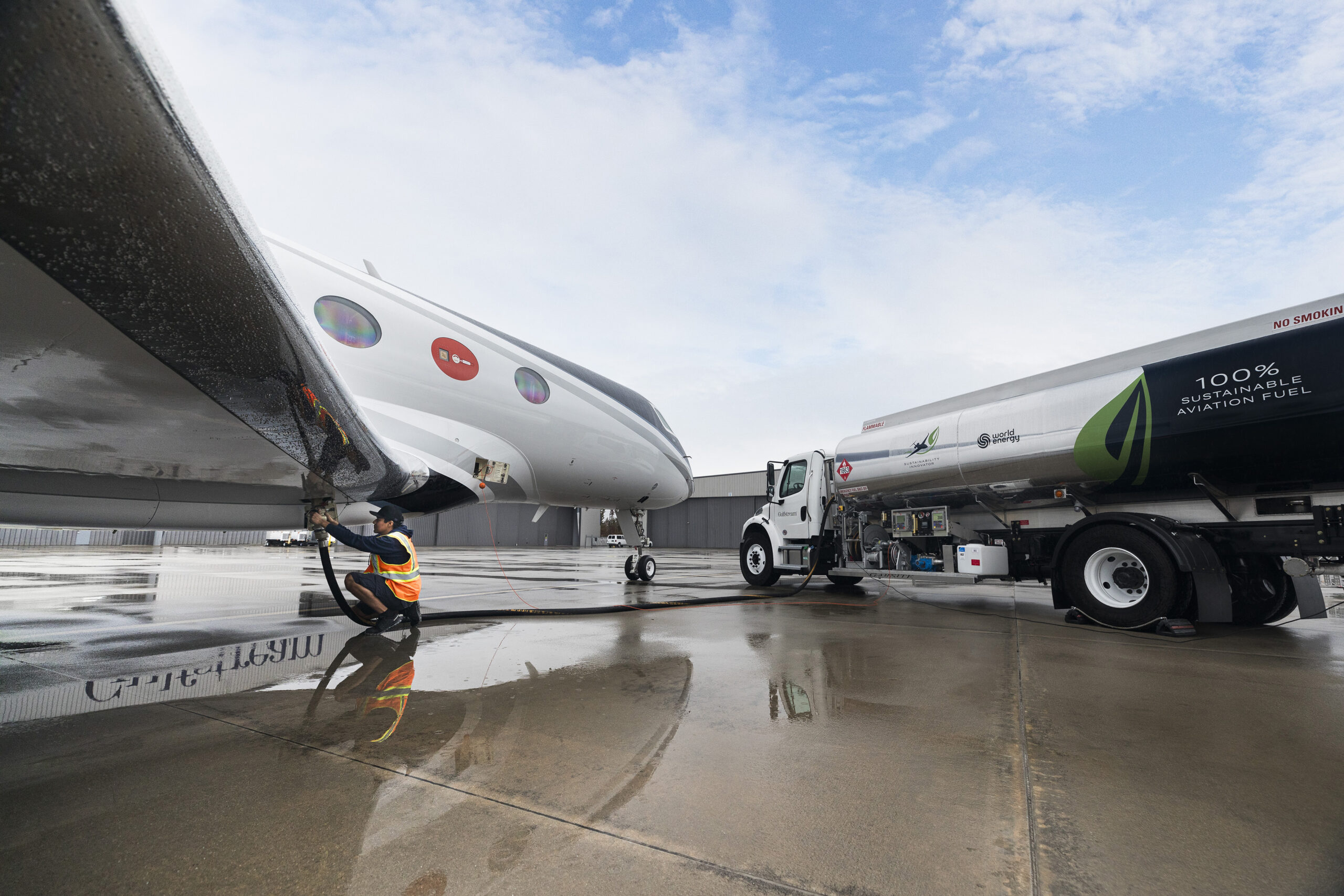In an epoch-defining flight, Gulfstream Aerospace Corp. has catapulted the aviation industry into a new era of sustainability by completing the world’s first transatlantic flight using 100% sustainable aviation fuel (SAF). This groundbreaking journey, conducted on November 19, saw the Gulfstream G600 aircraft take off from Savannah, Georgia, and touch down at Farnborough Airport in England 6 hours and 56 minutes later.
The G600, powered by Pratt & Whitney PW815GA engines, utilized 100% Hydroprocessed Esters and Fatty Acids (neat HEFA), a type of SAF. This fuel is a game-changer, boasting at least 70% lower lifecycle CO2 emissions than conventional jet fuel. This significantly reduces aviation’s carbon footprint, a crucial step towards the industry’s net-zero emission goals. The SAF for this flight was supplied by World Energy and delivered by World Fuel Services, illustrating a collaborative effort in the sustainability drive.
Mark Burns, president of Gulfstream, emphasized the importance of SAF in achieving decarbonization in business aviation. He stressed that the success of this flight propels the industry closer to its sustainability mission, creating a lasting positive environmental impact for future generations. The low carbon, sulfur, and aromatics profile of SAF not only reduce greenhouse gas emissions but also have less impact on local air quality due to their very low sulfur content.
The data gathered during this flight is invaluable. It will enable Gulfstream and its partners to assess aircraft compatibility with future low-aromatic renewable fuels, especially under extended flight durations and cold temperatures. This analysis is pivotal for the aviation industry’s evolution towards 100% SAF usage.
Anthony Rossi, VP of Sales & Marketing at Pratt & Whitney Canada, applauded Gulfstream for completing this mission. He highlighted the ongoing efforts to validate the compatibility of their engines with unblended SAF. Pratt & Whitney Canada’s commitment to SAF compatibility is longstanding, with their engines certified to operate with up to 50% SAF blends for over a decade. This transatlantic flight is a testament to the functionality of both engine and aircraft in a fully operational setting using 100% SAF.
Similar Posts
The G600, which entered service in 2019 powered by twin PW815GA engines, has consistently fulfilled Gulfstream‘s promises to its customers. Mike Burns noted the aircraft’s consistent performance and its role in demonstrating Gulfstream’s commitment to sustainability innovation through new aircraft and propulsion technologies. This aligns with environmentally responsible practices, setting a benchmark in the industry.
Pratt & Whitney Canada’s engines have surpassed one billion hours of flight since the debut of the PT6 turboprop engine in 1963. The PW800 engine family, contributing over 330,000 hours, underscores the trust and confidence placed in these engines by aircraft operators worldwide.
Gulfstream’s commitment to sustainability is not new. As the first business jet original equipment manufacturer to fly on 100% SAF, Gulfstream continues to lead the industry’s sustainability efforts. This historic flight further advances the company’s dedication to researching and developing innovative new aircraft, technologies, and services.
The collaboration with key partners like Honeywell, Safran, and Eaton has been crucial in this journey. Mark Burns extended his gratitude to all partners for their support in making this milestone flight possible and for their continued collaboration in championing the aviation industry’s path to 100% SAF usage.
Gulfstream’s successful transatlantic flight on 100% SAF is more than a record-setting endeavor. It marks a significant stride towards a more sustainable future in aviation, driving the industry closer to its net-zero emission goals. The data collected from this flight will play a critical role in understanding the full potential of SAF, paving the way for broader usage and acceptance in the aviation sector. As the industry looks ahead, this flight stands as a beacon of innovation and a milestone in the journey towards sustainable aviation.


















